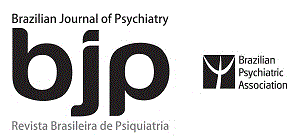Resumo em Português:
OBJETIVOS: Estimar a prevalência de ideação suicida (IS), planos e tentativas de suicídio (TS) ao longo da vida e identificar variáveis associadas à ideação suicida. MÉTODOS: Foi realizado inquérito domiciliar com 515 indivíduos > 14 anos de idade, selecionados aleatoriamente, mediante amostragem estratificada, por conglomerados. Foram avaliados utilizando-se uma entrevista padronizada, da Organização Mundial de Saúde (OMS), sobre comportamento suicida (SUPRE-MISS), SRQ-20 e AUDIT. Foram calculadas as prevalências na vida e ajustados modelos de regressão logística uni e multivariada, calculando razões de chances (RC), controlando-se sexo e idade como covariáveis, com seus respectivos intervalos de confiança (IC). RESULTADOS: As prevalências foram de 17,1% (IC 95%: 12,9 - 21,2) para ideação suicida, 4,8% (IC 95%: 2,8 - 6,8) para planos e 2,8% (IC 95%: 0,09 - 4,6) para tentativas de suicídio. De cada três tentativas de suicídio, apenas uma chegou a ser atendida em um serviço médico. Ao longo dos últimos 12 meses, as prevalências foram, respectivamente, de 5,3% (IC 95%: 3,5 - 7,2), 1,9% (IC 95%: 1,0 - 2,8) e 0,4% (IC 95%: -0,3 - 1,1). A ideação suicida, ao longo da vida, foi mais freqüente entre mulheres (RC = 1,7), adultos jovens (RC 20-29 anos = 2,9; RC 30-39 anos = 3,6, quando comparados com a faixa etária de 14-19 anos), entre os que vivem sozinhos (RC = 4,2) e nos indivíduos que apresentaram indicadores de transtorno mental (RC entre 2,8 e 3,8). CONCLUSÕES: As prevalências não diferiram do observado pela maioria dos estudos realizados em outros países. A ideação suicida esteve consistentemente associada a indicadores de transtornos mentais ou de sofrimento psíquico. Essa observação, juntaente com o conhecimento dos fatores socioambientais associados ao comportamento suicida, deve ser levada em consideração na elaboração de estratégias de prevenção.
Resumo em Inglês:
OBJECTIVES: To estimate the life prevalence rates of suicidal ideation, suicidal plans and suicide attempts and verify factors associated to suicidal ideation. METHODS: 515 individuals > 14 years old were selected at random (cluster and stratified sample) and assessed by means of the WHO SUPRE-MISS interview, SRQ-20 and AUDIT. Life prevalence rates were estimated. Uni and multivariate analyses were performed. Odds ratios, together with confidence intervals, were adjusted by gender and age. RESULTS: Life prevalence rates were 17.1% (95% CI: 12.9 - 21.2) for suicidal ideation, 4.8% (95% CI: 2.8 - 6.8) for plans and 2.8% (95% CI: 0.09 - 4.6) for suicide attempts. Only one-third of those who attempted suicide were later treated at a health facility. The 12-month prevalence rates were, respectively, 5.3% (95% CI: 3.5 - 7.2), 1.9% (95% CI: 1.0 - 2.8) and 0.4% (95% CI: -0.3 - 1.1). Suicidal ideation was more frequently reported by women (OR = 1.7), young adults (20-29 years old: OR = 2.9; 30-39 years old: OR = 3.6, compared to the 14-19 year old group), those living alone (OR = 4.2) and those presenting mental disorders (OR between 2.8 and 3.8). CONCLUSION: The prevalence of suicidal behavior was similar to that found in most studies carried out in other countries. Suicidal ideation was consistently associated with factors related to mental disorders or psychological distress. This should be taken into account when developing strategies to prevent suicidal behavior.
